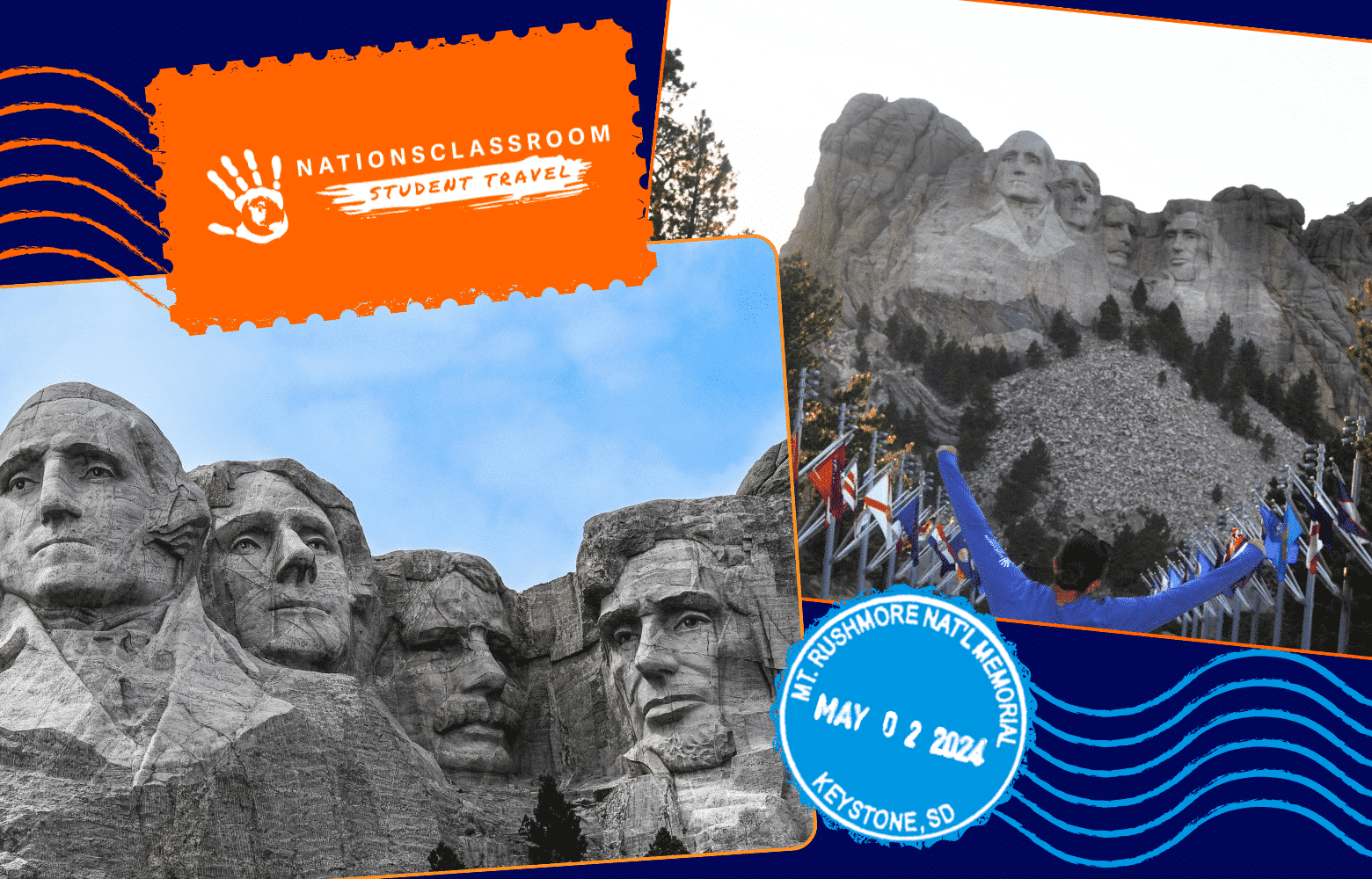7 Things You Probably Didn’t Know About Mount Rushmore

After 14 long years of work, Mount Rushmore was completed on October 31, 1941. Today it draws roughly 2.44 million visitors annually, making it South Dakota’s #1 site for tourists.
Before you plan your next school trip to South Dakota, here are seven fun facts you may not know about Mount Rushmore:
1. A Hidden Hall of Records
Tucked behind Lincoln’s head lies a real-life secret vault, called the Hall of Records. Borglum began carving a 70-foot chamber here, but the plan stalled in 1939. Then, in 1998, the Park Service filled the tunnel floor with a teakwood box inside a titanium vault under a granite capstone. It holds 16 porcelain enamel panels featuring historical essays, founding documents, and photos of the sculptors. Not open to the public, it’s a hidden time capsule for the distant future.
2. How the Mountain Got Its Name
Believe it or not, the mountain didn’t always have a name. In the 1880s, a New York lawyer named Charles E. Rushmore traveled to the Black Hills to help survey tin mining claims. During his visit, he pointed to a granite peak and casually asked some locals what the hill was called. When they told him it didn’t have a name, someone joked, “Let’s call it Rushmore Peak!” and the nickname stuck. In 1930, the name was officially recognized as Mount Rushmore.
3. How the Faces Were Chosen
Gutzon Borglum, the sculptor of Mount Rushmore, chose Washington, Jefferson, Roosevelt, and Lincoln to symbolize the four key eras of U.S. history: birth, expansion, development, and preservation. Each head is carved to a staggering 60 ft tall, with 11-ft eyes and 18-ft mouths, which make them impossible to miss from a distance.
4. Altering the Original Plan
Doane Robinson, known as the “father of Mount Rushmore,” initially wanted to showcase Western heroes like Buffalo Bill, Lewis & Clark, and Red Cloud. Even Susan B. Anthony was once proposed as a fifth face! However, concerns about rock stability, federal funding, and wartime priorities nixed those plans. Still, it makes you wonder what could have been.
5. The “Fifth Face” That Did Appear
There’s no physical fifth president carved into the mountain, but Ben Black Elk, a Lakota Sioux descendant of holy man Black Elk, became the spiritual “Fifth Face.” For nearly 30 years, he greeted tourists dressed in traditional regalia. So many photos were taken of him that some call him the most photographed man of his era.
6. How Big is Mount Rushmore?
Each presidential head on Mount Rushmore stands about 60 feet tall, roughly the height of a six-story building. The eyes measure 11 feet across, and the mouths span up to 18 feet wide. Sculptor Gutzon Borglum originally planned to carve the presidents from head to waist, but funding ran out in 1941. As a result, only the heads were completed.
7. Crazy Horse is Way Bigger
Just a short drive from Mount Rushmore, the Crazy Horse Memorial is on its way to becoming the largest mountain carving in the world. The face alone, completed in 1998, stands at 87 feet tall, nearly 30 feet taller than any of the presidents on Mount Rushmore.
Construction is still ongoing, and as of 2025, a new 270-foot tower crane equipped with a robotic arm has been added to help with the next phase of carving. This high-tech equipment is making it possible to lift massive pieces of rock and make more precise cuts, helping bring the decades-long vision of honoring Native American heritage one step closer to reality.
Bring History to Life On Your Next School Trip
At Nations Classroom, we help teachers create experiences their students will remember for a lifetime. From Mount Rushmore to Yellowstone and beyond, our National Park adventures are designed to spark curiosity, build connections, and make learning unforgettable.
Want help mapping out the perfect itinerary?
Visit our National Parks Trips page for more information or Schedule a Call with one of our travel experts. We make it easy to turn your trip vision into something unforgettable for you and your students.



